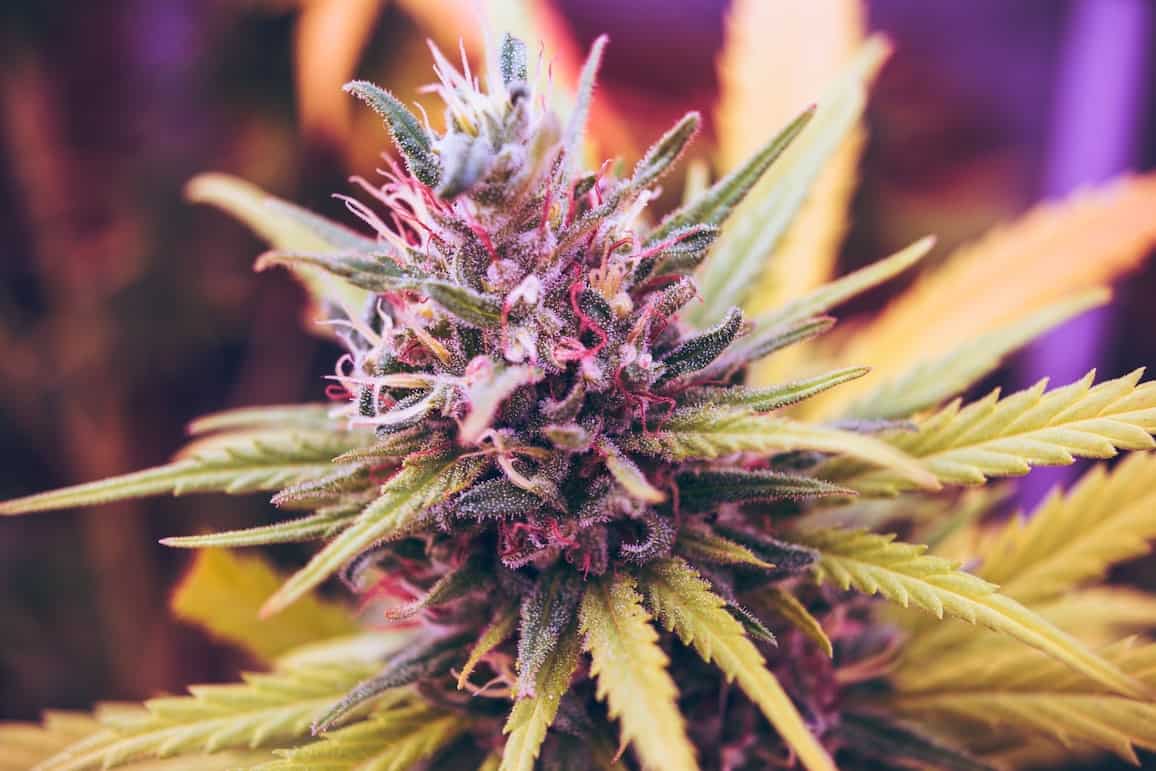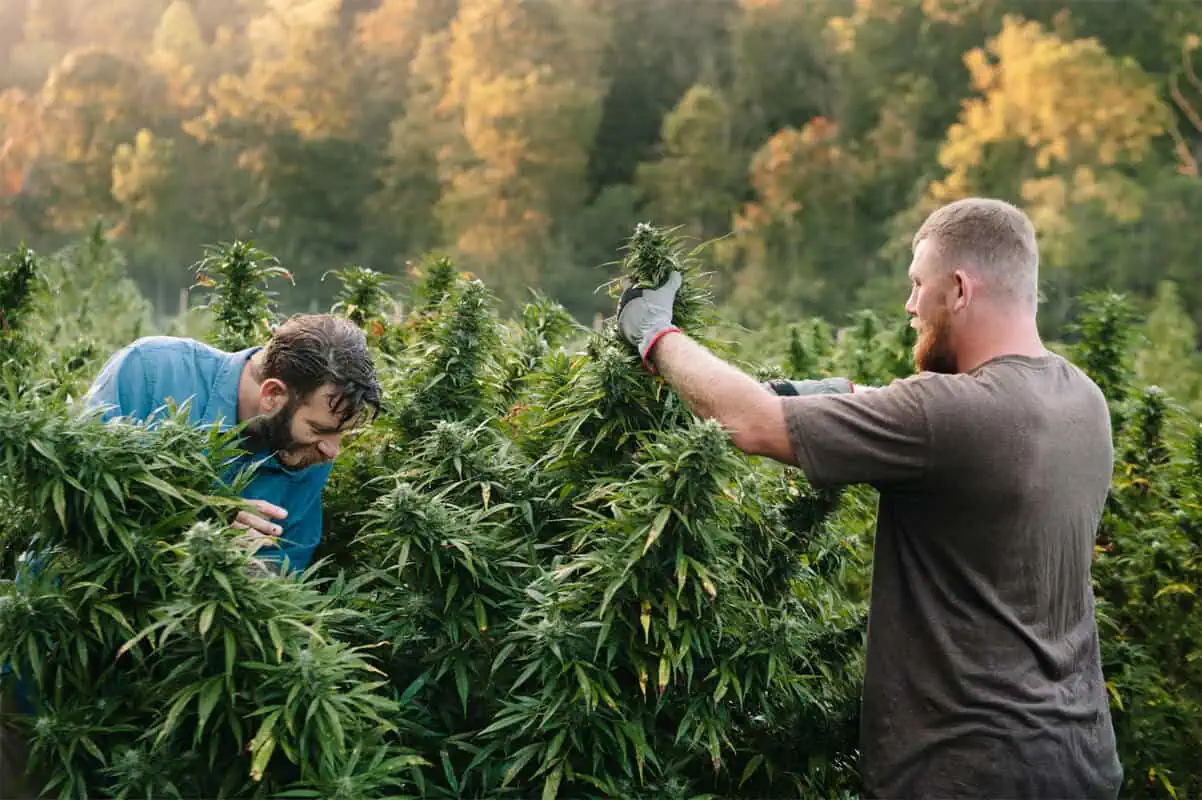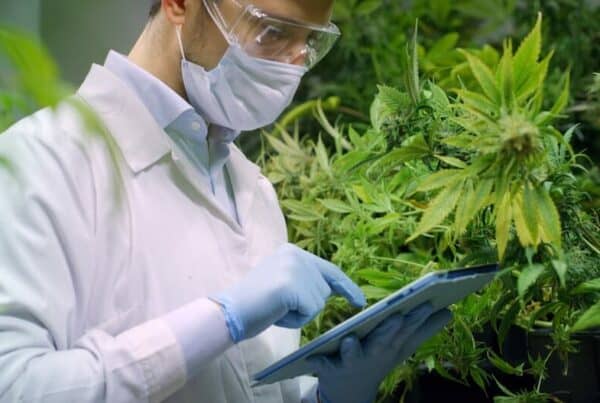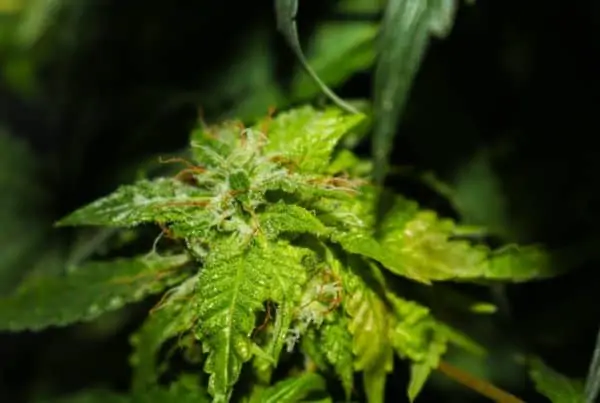TABLE OF CONTENTS
If you're interested in growing bigger and better looking cannabis flower buds, check out our guide on this secret bud swelling technique used by the pros. Bud pinching, also known as backbuilding, is an old-school cannabis training technique that can be used to cut off the tips of your cannabis flower buds.
While this technique may seem counterintuitive for many weed growers, others swear that it increases the size and density of their cannabis flowers.
What is Bud Pinching?
Bud pinching, in theory, triggers an immune response from the cannabis plant which limits vertical growth and increases horizontal growing, thereby, making your buds fatter and more swollen.
Essentially, growers believe the bud pinching focuses energy and growth hormones on its lower buds, similar to the topping technique used during the vegetative stage.
Bud pinching should not be confused for topping a cannabis plant during its vegetative stage. The topping technique refers to cutting off the top of your cannabis plant to allow the growth to focus on the lower plant. However, both techniques are similar in that if you cut off too much, you'll completely stunt vertical growth.
Backbuilding Benefits of Bud Pinching
- Denser buds
- More uniform bud shape
- Better visual appeal
Bud pinching has many benefits according to expert growers, but can be quite time-intensive for large-scale gardens. Cutting the tips of your cannabis colas for hundreds or thousands of plants at a time takes a lot of time and manual labor. However, many growers argue that it’s worth the effort to remove the tips for better-looking buds.
Timing Is Everything
This backbuilding technique can be performed during the flowering stage, particularly in the middle of the stage. Many cannabis growers start the process during the third, fourth, or fifth week of flowering before they start snipping away.
However, some growers wait to pinch off the tips during the sixth or later weeks. Backbuilding timing varies by your plant genetics and growing environment.
How to Pinch Your Buds
There’s no exact science to the process of backbuilding, which means that it requires a lot of experimentation. Here’s a step-by-step guide on the main aspects of bud pinching to swell your cannabis flowers.
- Disinfect your scissors, shears, or other cutting tools before cutting the tip of your flowering colas.
- Cut off the top 1/16, ⅛, or ½ inch of your colas (varies by plant and grower preference). If you just want to test out the method, try it out on a single bud site instead of all of your plant’s colas.
- Repeat the process every 10 to 14 days (about 2 weeks) in the same area you pinched off the tip. You should see your buds grow larger and fatter in size.
- Stop the process a couple of weeks before harvest to allow your plant to recover.
Pro tip: Keep the pinched off buds for later use. Dry and cure them if possible. While they won't get you super high, they will have just enough aroma and flavor to get you going without wasting the tips of your buds.
Keeping Buds Healthy

Whenever you damage your flower buds, you are always risking disease and mold growth, especially in a humid environment full of stale air and limited air flow.
If you plan on cutting off the tips of your buds, make sure your humidity levels are optimal and there is enough airflow in the canopy to reduce the risk of disease. A simple fan can do the trick.
Bud Swelling Technique: Fact or Fiction?
As you might expect, a growing technique that involves damaging the flowering buds is highly controversial. Many growers suggest that the bud swelling technique is a placebo spurred by the pinching which makes the buds appear fatter and squatter.
Others see significant gains from the technique. Many claimed that certain strains are more compatible with this technique.
In the end, there's no definitive answer on whether this cannabis training technique helps improve the size and density of your buds. If you're scared of stunting the growth of your cannabis plants, test out your technique on a single plant or single cola.
Without the proper data to back up these claims, it's up to growers to take the leap and find out for themselves.
Unfortunately, it's hard to tell whether the technique has worked or not with a single or a small garden. It's difficult to say whether the pinching actually helps the buds swell up or if it's due to a different factor in the growing environment.
Ultimately, the most definitive factor influencing the size, look, and quality of your cannabis flower buds are its genetics and your growing practices.
Backbuilding Bud Pinching FAQ's
What is bud pinching or backbuilding in cannabis cultivation?
Bud pinching, sometimes called backbuilding, removes cannabis flower bud tips. This method directs plant energy to lower buds, increasing horizontal growth. Denser, bigger buds are desired.
Why is backbuilding used by cannabis growers?
Growers increase bud density and size by backbuilding. Cut the buds' tips to focus growth on the rest, which can produce bigger, more compact flowers. The buds may also look better after this method.
How do you perform bud pinching or backbuilding?
Carefully clip the tip of a budding cannabis bud to backbuild it. Precision cuts require clean, sharp scissors. To avoid injuring the bud, remove only the tip. Avoiding plant damage takes accuracy.
When is the best time to perform backbuilding on a cannabis plant?
Backbuilding is best during flowering, when buds are still developing. The mid to late flowering stage permits the plant to focus on bud growth.
What are the risks associated with backbuilding?
Backbuilding can stress and stunt the plant if done improperly. Pinching or trimming too much of the bud might harm it, reducing yield and quality. Gentleness and precision are key with this approach.
Can backbuilding be combined with other cannabis training techniques?
Backbuilding works with Low-Stress Training (LST) and Sea of Green. To avoid overstressing the plant, check its reaction to several training approaches.
Is backbuilding suitable for all cannabis strains?
Backbuilding effectiveness depends on strain. This approach may boost bud density on some strains but not others. Growing strains to test backbuilding suitability is common.
How does backbuilding affect the overall yield of a cannabis plant?
Backbuilding affects yield differently. It seeks to grow denser buds, although the crop may not weigh more. Some growers report prettier buds without a considerable production increase.
Are there any special considerations for backbuilding in outdoor cultivation?
Backbuilding for outdoor horticulture depends on temperature and surroundings. Sunlight, humidity, and temperature affect plant recovery and growth following pinching.
“
There are over 300,000 jobs in the cannabis industry. CTU trained me for one of them!

Makes $24.50 @ THC +
How often should you perform backbuilding on a cannabis plant?
In flowering, each bud is backbuilt once. Repeatedly pinching the same bud can stress and destroy the plant.
Learn How to Grow Cannabis Online
To learn how to grow marijuana online enroll at the leading cannabis school. Learn all aspects of cannabis cultivation whether you want to grow cannabis indoors or out, or if you are a beginner or advanced grower.
Perfect the Art of Cannabis Cultivation
Looking at schools for growing weed? Interested in learning more secrets from the pros? Do you want to improve your marijuana garden with tried-and-true cultivation methods used by commercial pot growers?
Enroll in Cannabis Training University’s online cannabis education courses for a comprehensive curriculum that you can learn at your own pace. CTU is perfect for growers of all skill levels. Whether you are completely new to gardening or you just want to learn advanced growing techniques, CTU has got you covered.

Luis Cordova
Luis Cordova is a distinguished author, and renowned expert in cannabis cultivation, who possesses a Master's degree in Plant Biotechnology and Pharmaceutical Science. As a valued contributor to highly esteemed publications such as Cannabis Training University and Maximum Yield Magazine, Luis has emerged as a trusted source of guidance and knowledge in the cannabis industry. Having written thousands of informative articles, Luis is widely recognized for his comprehensive expertise on cultivating cannabis, both indoors and outdoors.












 Jeff was involved in an accident where he endured a traumatic brain injury. He had a week-long stay in ICU where brain surgeons
Jeff was involved in an accident where he endured a traumatic brain injury. He had a week-long stay in ICU where brain surgeons  100% risk free money back guarantee within 48 hours after purchase if student has not completed any of the courses or exams.
100% risk free money back guarantee within 48 hours after purchase if student has not completed any of the courses or exams.